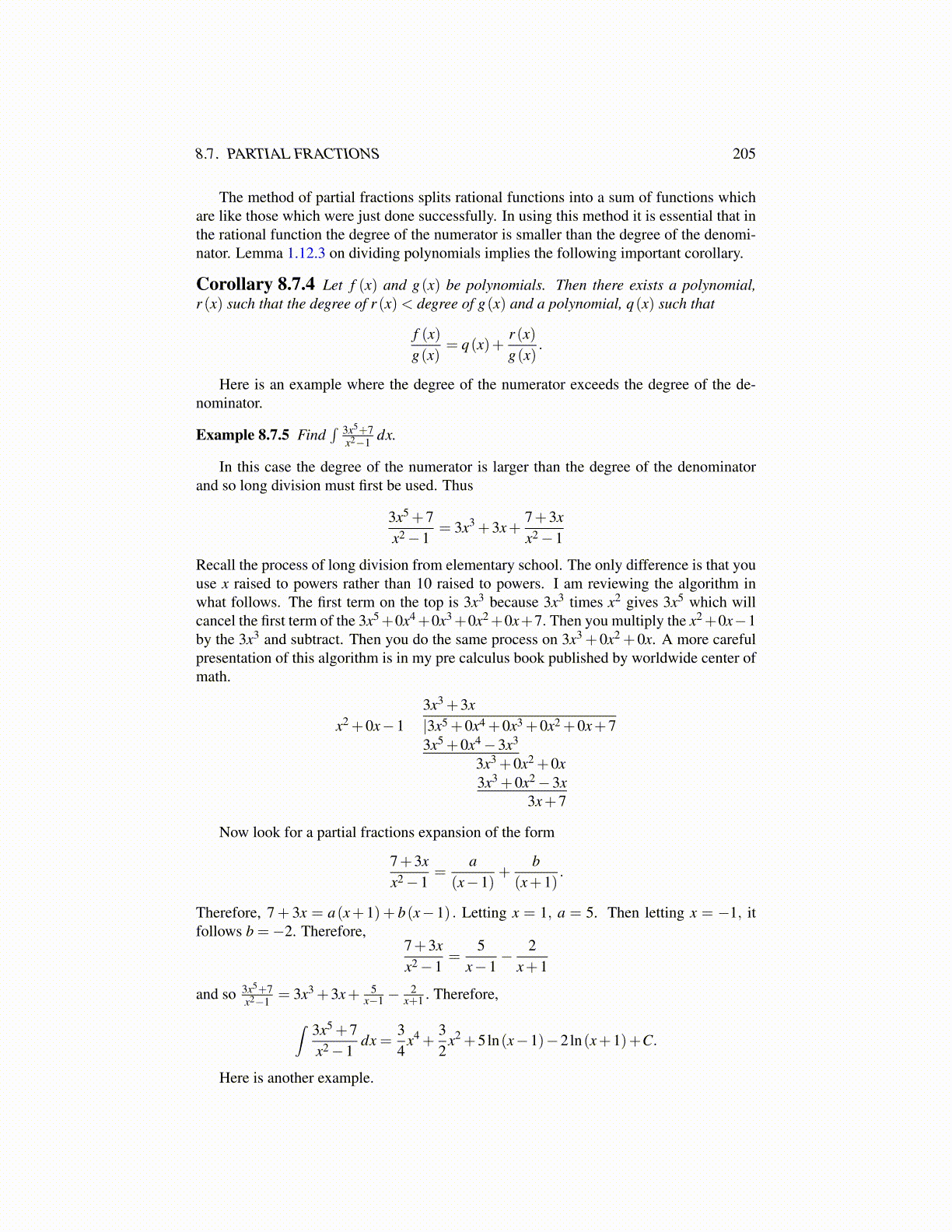
8.7. PARTIAL FRACTIONS 205
The method of partial fractions splits rational functions into a sum of functions whichare like those which were just done successfully. In using this method it is essential that inthe rational function the degree of the numerator is smaller than the degree of the denomi-nator. Lemma 1.12.3 on dividing polynomials implies the following important corollary.
Corollary 8.7.4 Let f (x) and g(x) be polynomials. Then there exists a polynomial,r (x) such that the degree of r (x)< degree of g(x) and a polynomial, q(x) such that
f (x)g(x)
= q(x)+r (x)g(x)
.
Here is an example where the degree of the numerator exceeds the degree of the de-nominator.
Example 8.7.5 Find∫ 3x5+7
x2−1 dx.
In this case the degree of the numerator is larger than the degree of the denominatorand so long division must first be used. Thus
3x5 +7x2 −1
= 3x3 +3x+7+3xx2 −1
Recall the process of long division from elementary school. The only difference is that youuse x raised to powers rather than 10 raised to powers. I am reviewing the algorithm inwhat follows. The first term on the top is 3x3 because 3x3 times x2 gives 3x5 which willcancel the first term of the 3x5+0x4+0x3+0x2+0x+7. Then you multiply the x2+0x−1by the 3x3 and subtract. Then you do the same process on 3x3 +0x2 +0x. A more carefulpresentation of this algorithm is in my pre calculus book published by worldwide center ofmath.
3x3 +3xx2 +0x−1 |3x5 +0x4 +0x3 +0x2 +0x+7
3x5 +0x4 −3x3
3x3 +0x2 +0x3x3 +0x2 −3x
3x+7
Now look for a partial fractions expansion of the form
7+3xx2 −1
=a
(x−1)+
b(x+1)
.
Therefore, 7+ 3x = a(x+1) + b(x−1) . Letting x = 1, a = 5. Then letting x = −1, itfollows b =−2. Therefore,
7+3xx2 −1
=5
x−1− 2
x+1
and so 3x5+7x2−1 = 3x3 +3x+ 5
x−1 −2
x+1 . Therefore,
∫ 3x5 +7x2 −1
dx =34
x4 +32
x2 +5ln(x−1)−2ln(x+1)+C.
Here is another example.